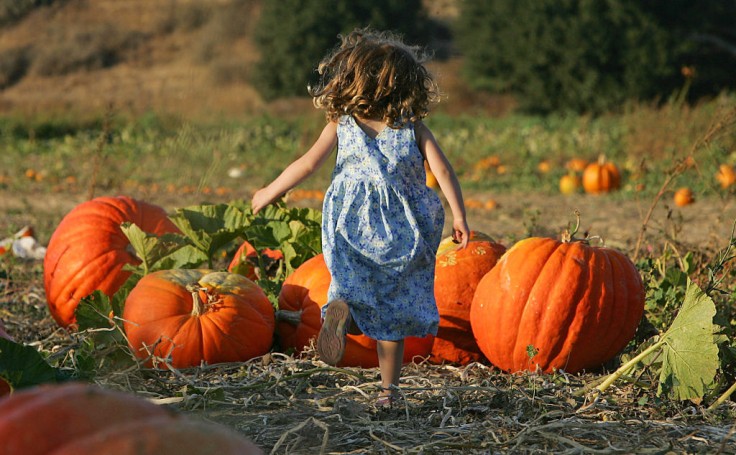
An 8-year-old girl from Los Angeles is sharing her battle on social media with a rare eating disorder called ARFID. Hannah has battled numerous challenges, from her tender age to food-related constrictions.
According to her mother, Michelle, she recalls Hannah's early resistance to transitioning from formula to whole milk, a struggle that persisted as Hannah grew older.
Even with solid foods, Hannah displayed aversion, often spitting them out or signaling her discomfort. Eventually, they learned that Hannah was dealing with avoidant restrictive food intake disorder (ARFID), a relatively recent addition to mental health diagnoses.
8-Year-Old Hannah Battles ARFID
Unlike some eating disorders linked to body image, ARFID centers around intense anxiety and fear concerning food.
Michelle, mindful of her family's privacy, explains that it took time to understand Hannah's condition fully. Despite initial misconceptions that ARFID merely denotes picky eating, Michelle emphasizes that the disorder's impact runs much deeper. In Hannah's case, it nearly necessitated medical intervention, such as a feeding tube.
A significant turning point in Hannah's journey, as Michelle recounts, came with the establishment of her Instagram presence, managed by Michelle herself. Through this platform, Hannah found a supportive community of thousands who rallied behind her efforts to explore new foods and shed light on ARFID's complexities.
Michelle expresses gratitude for the platform's positive influence, noting Hannah's motivation, encouragement, and the profound impact she's had on followers, enlightening them about ARFID's nuances and her personal triumphs over adversity.
ARFID Awareness: Rare Eating Disorder
ARFID, an eating disorder relatively new in the medical lexicon, manifests as extreme selectivity and disinterest in consuming food among affected children. This limited diet often results in inadequate nutrition and stunted growth.
Unlike more familiar eating disorders, ARFID typically manifests at younger ages, with a higher prevalence among boys.
The exact etiology remains elusive, although experts speculate on a confluence of factors including inherent temperament, genetic predispositions, and potential triggering incidents like choking episodes.
Some ARFID cases coincide with underlying medical conditions such as GERD, eosinophilic esophagitis, or allergies, exacerbating feeding challenges.
Hannah's experience with ARFID underscores its profound impact. She has grappled with debilitating migraines, persistent vomiting episodes, and recurring constipation, significantly impeding her bone development and height progression, despite her parents' robust statures.
Socially, ARFID has isolated Hannah and others similarly afflicted. Fearful of food-related situations, Hannah avoids restaurants and family meals, opting out of social gatherings for fear of food-related pressures or unkind remarks.
These challenges highlight the complex interplay between ARFID's physical ramifications and its social repercussions, illustrating the multifaceted nature of this lesser-known eating disorder.
Growing a Community on Social Media
Michelle sought out a specialized therapist outside her state to address Hannah's ARFID challenges.
While encouraging Hannah to eat remained a struggle, Michelle discovered a strategy: filming Hannah trying new foods for her therapist, which Hannah complied with.
As Michelle documented these moments, sharing them on Instagram initially for family and friends' awareness, the response was unexpectedly immense. Within days, one video garnered a million views, propelling Hannah's Instagram account to 1.5 million followers.
The Instagram account's growth was fueled by curiosity about ARFID and an outpouring of supportive comments, validating Hannah's experiences and fostering a sense of community.
For Michelle, the impact surpassed mere awareness; it became a lifeline for those grappling with similar issues.
Aside from that, they decided to also upload Hannah's videos on TikTok, which received a lot of support from their viewers. Hannah also posted a video on TikTok that went viral.
@myarfidlife ♬ original sound - Myarfidlife - Hannah
This video shows her mom feeding the 8-year-old as she tries to bravely consume a spoonful of food while her brother is filming the video and cheering for him.
The platform not only provided validation for Hannah but also shed light on a condition that many previously struggled to name or understand.
The positive reinforcement from followers became pivotal in Hannah's progress, empowering her to confront her fears daily by trying new foods on camera and sharing her candid thoughts and emotions.
Despite occasional anxieties, Hannah committed to sampling each food at least three times, leading to significant progress. To date, she has explored 107 new foods, favoring 41 of them for future consumption and identifying seven as safe choices, free from anxiety triggers.
Related Article: 5 Toxic Phrases to Avoid When Raising Successful Kids